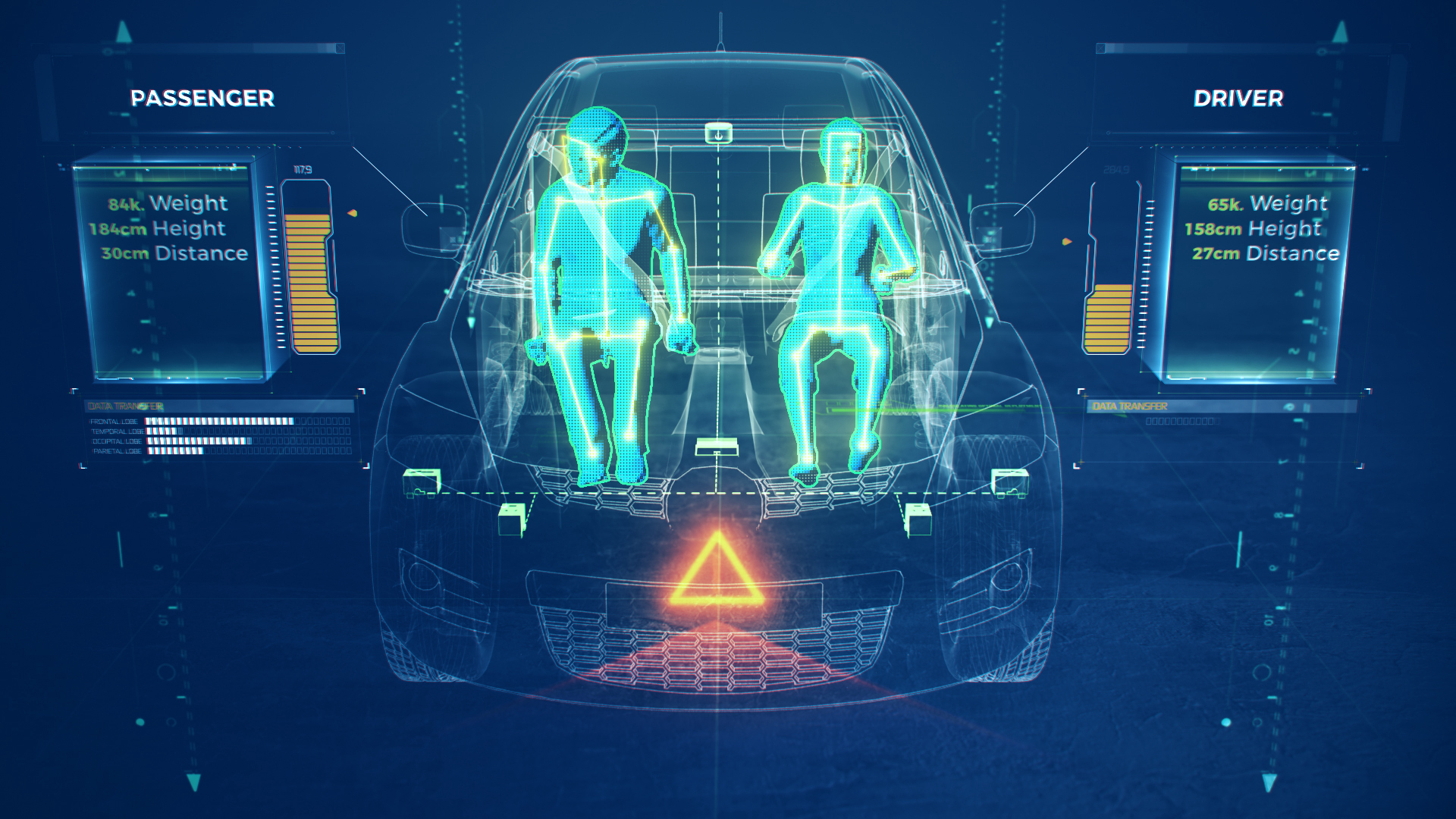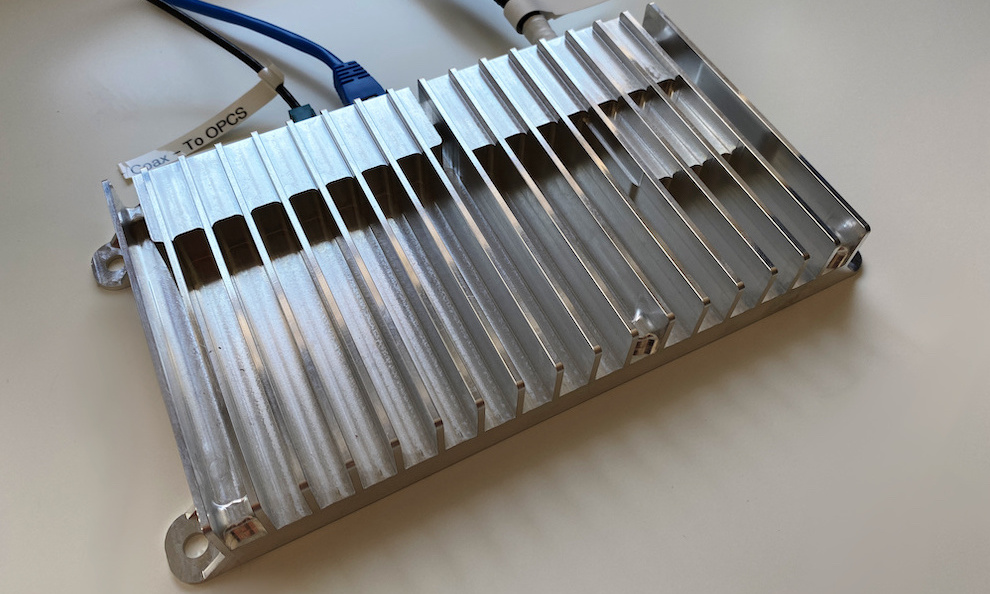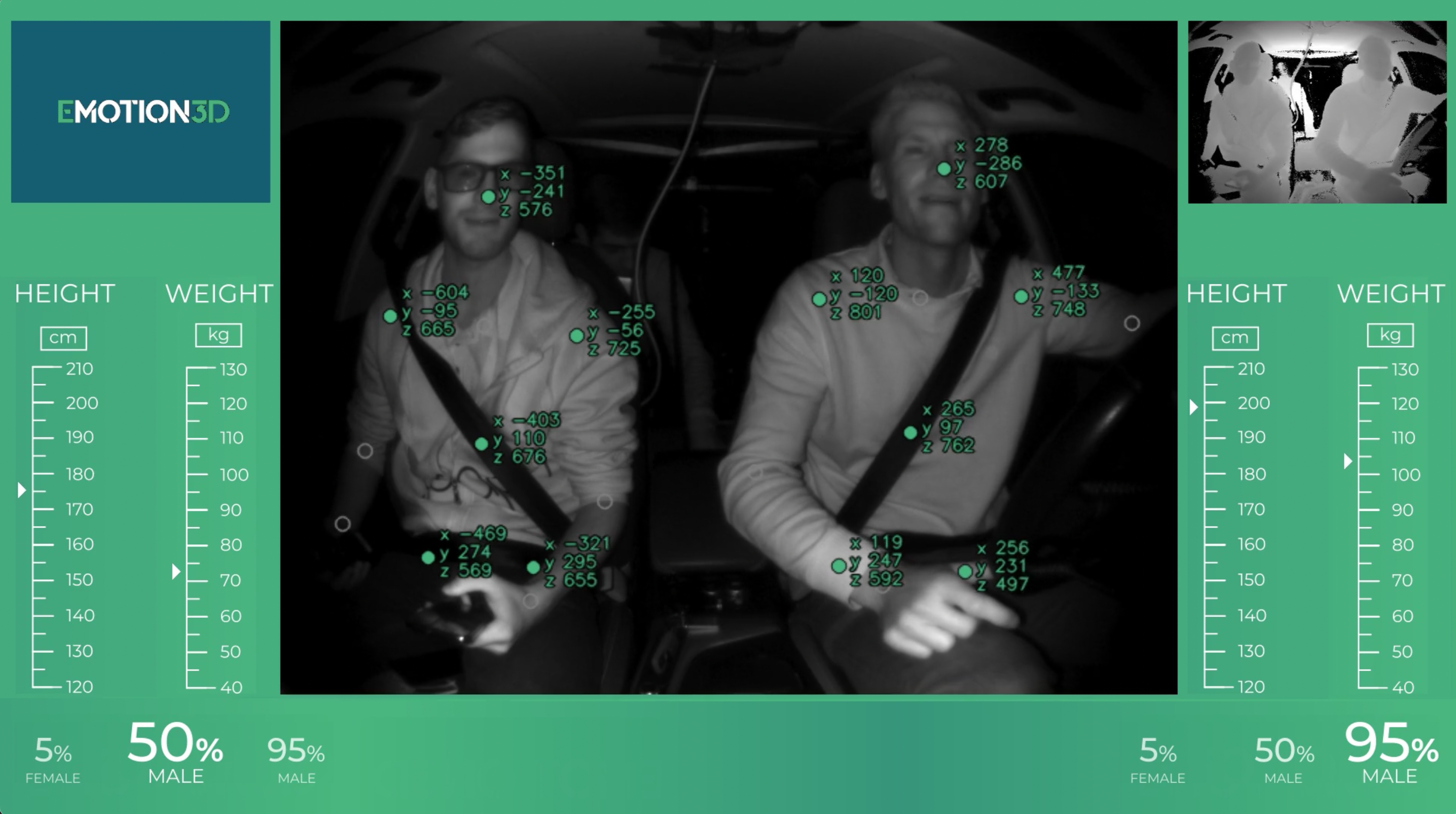THE SYSTEM
smart-RCS is now available and ready for evaluation by OEMs. It comes with a 3D camera, a processing platform including software for human analysis and an adaptive restraint control system. It uses cutting-edge technology to optimize airbag deployment for all occupants and situations.
AN OVERVIEW
OF THE INTELLIGENT, ADAPTIVE SYSTEM
The goal of the smart-RCS is to provide situation-aware and individualised protection for every occupant. We do this by integrating human understanding into a restraint control system. The system consists of two parts: the human sensing module and the adaptive restraint control system.
The human sensing module, consisting of a Time-of-Flight (ToF) camera and a human analysis software running on a processing platform, sends precise information on the occupants’ positions and characteristics to the adaptive restraint control system. The adaptive restraint control system computes the optimal airbag deployment strategy for any given situation.

HUMAN SENSING MODULE
FOR DERIVING PRECISE INFORMATION ON THE OCCUPANTS
THE TIME-OF-FLIGHT CAMERA
CREATES A 3D IMAGE OF THE OCCUPANTS
The ToF module main parts include a ToF sensor, VCSEL illumination and optics for transmitted and received light. The module operates with indirect ToF meaning that the illumination is pulsed with high frequency in sync with the sensor capturing sequence. The phase shift of the light reflected back from the scene corresponds to the distance to the objects and can be translated to 3D image.
The ToF module is built as a satellite camera to handle space and heat dissipation constraints in the in-cabin environment. The raw images consisting of the phase data from the ToF sensor is transmitted to the processing unit.
THE PROCESSING UNIT
RUNS THE SOFTWARE DERIVING OCCUPANT INFORMATION
The processing unit hosta the software used to build 3D images from the ToF phase data. It also hosta the human analysis software that outputs the occupants’ individual characteristics and positions.
THE HUMAN ANALYSIS SOFTWARE
PROCESSES THE 3D IMAGES AND OUTPUTS RELEVANT OCCUPANT INFORMATION
Advanced deep learning algorithms are applied to the input images and provide the adaptive restraint control system with information on the occupants’ characteristics and body positions. Currently, the information provided is height and weight information, occupant classification and certain body keypoints in 3D space. In the future, multiple more factors will be considered for airbag deployment.
The human analysis software is running with more than 100 frames per second as the estimation of body movements moments before the crash requires a low latency.
ADAPTIVE RESTRAINT CONTROL SYSTEM
FINDING THE OPTIMAL AIRBAG DEPLOYMENT STRATEGY
The adaptive restraint control system includes Veoneer’s proprietary logic for optimized, adaptive restraint control deployment. The results of the human sensing module are used to compute an optimzed restraint deployment strategy. The algorithm which computes the deployment strategy has been developed based on vast amounts of crash data, simulations and real-world tests.



